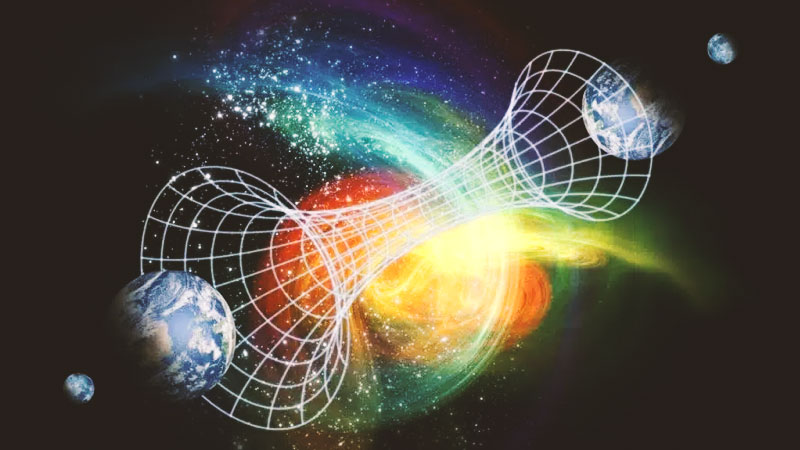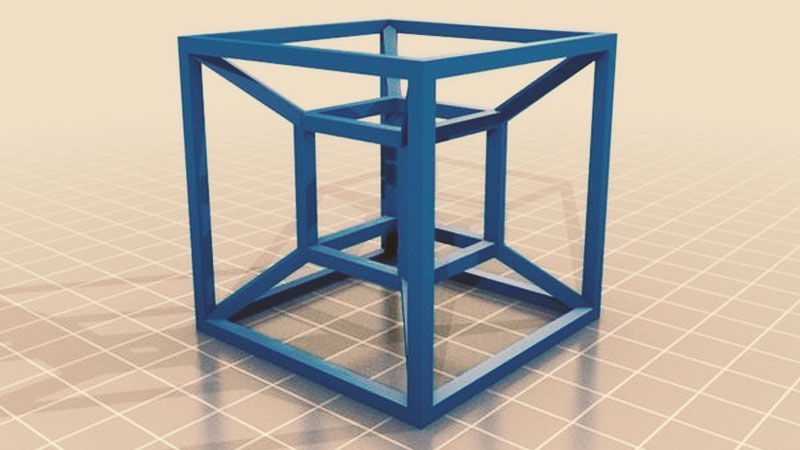
A dimension is simply a direction in space. Right now, we know three spatial dimensions, which we could call ‘back and forth’, ‘left and right’ and ‘up and down’. The fourth dimension represents time which seems to flow only in the direction ‘from past to future’, but mathematically there is no impossibility that the opposite could also be true.
“Imagine a long narrow river, with boats of different sizes sailing on it. If you have a huge ship, which takes up almost the entire width, you can only move along the river, you don’t have the possibility to move sideways, across the width, so from the perspective of that ship, the river has just one dimension. If what you have is a sailboat, you can zigzag, so from the sailboat’s point of view, the river has two dimensions. If you had a submarine, you could also sail to the surface or to the bottom of the river, so you would experience both the length and the width and also the depth. From this perspective, the same river has three dimensions,” explains Particle Physicist Rakhi Mahbubani of CERN, the European Organization for Nuclear Research, located in Geneva, Switzerland.
Other Dimensions
The concept of additional dimensions may seem futuristic, but this idea has been around for a long time and became popular in the world of mathematics when the German Bernhardt Riemann demonstrated in 1854 that there could be more than three dimensions in geometry.
Later in the same century, British mathematician Charles Howard Hinton, a science fiction fanatic, designed a four-dimensional ‘Hypercube’ called the ‘Tesseract’.

Along with science came art, and the concept of additional dimensions appeared in works by Oscar Wilde, Marcel Proust and HG Wells and the tesseract gained a prominent role in Marvel comics and movies. He also inspired Cubist artists such as Picasso, who tried to represent more dimensions in his paintings.
However, until now, no one has been able to prove that these dimensions actually exist, and this is the work that physicists are now trying to do at CERN, and to test theories, experiments are needed.
“One very compelling reason is that we don’t really understand why the force of gravity is so much weaker than the other fundamental forces that we experience. If I give you a fridge magnet and a random key, the magnet will lift the key very easily. The magnetic force of this small magnet overcomes the force of Earth’s gravity, which is huge, which pulls the key in the opposite direction,” says physicist Mahbubani.
But why does this imply in the existence of other dimensions? “The hypothesis is that gravity, like the submarine in the river, can experience additional dimensions, while we do not have that capability. And it dissipates in these other dimensions and that’s why we feel that it is very weak,” explains Mahbubani.
Discovering the Fifth Dimension
To find the smallest fundamental particles in the Universe, you first need a huge object.
The one in use at CERN is called the Large Hadron Collider or LHC, a 27 km in circumference proton accelerator. With this machine, beams of particles are fired at nearly the speed of light, so when two protons collide, they create all sorts of other particles.
If current theories are correct, there is little chance that one of the subatomic particles in this collision is what has been called a ‘graviton’.
Quantum physics tells us that every force has a related particle that carries it. For example, light is carried by photons. So gravity should theoretically be carried by gravitons, it’s just that they’ve never been observed, and that’s what CERN scientists have been working on for the last decades.
Theoretical physicist Sean Carroll of Caltech, the California Institute of Technology, is not so optimistic and says: “We are sure that gravitons exist, what we are not sure is that they can be discovered with the Large Hadron Collider. Just because we don’t see these particles doesn’t mean they aren’t there, but our experiments are still not good enough. If we keep trying, we’ll find them someday. What we do know for sure is that they are somehow hidden, so they could be very small, a fraction of a millimeter, and we will never see them, or another possibility is that these other dimensions are infinitely large, and we will not be able to reach them because we are trapped in a subspace of the lower dimension of the Universe”.


















